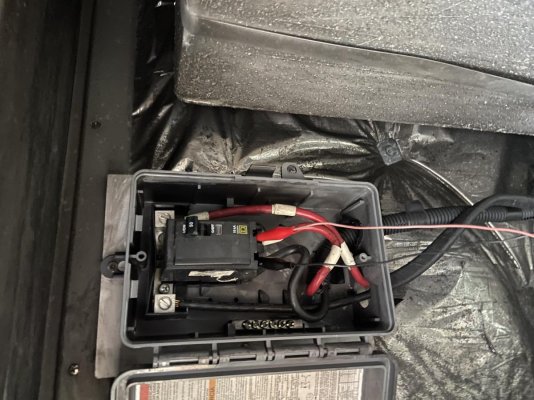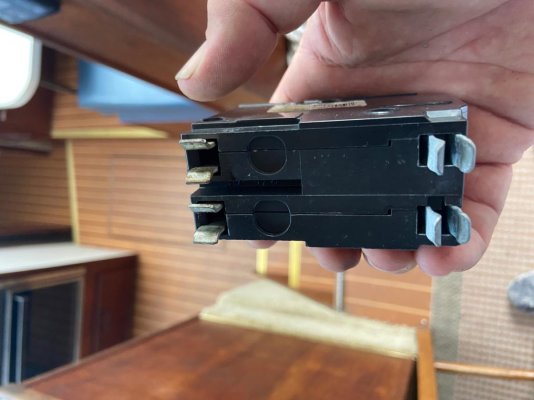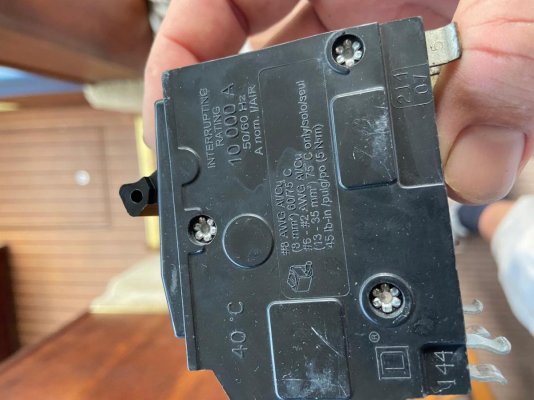ORIF
Senior Member
I'm having an issue the breaker for my genset.
Generator is an 8KW NorthernLights running at 120V.
The breaker is mounted on the bulkhead immediately adjacent to the genset.
Breaker is a 2 pole 50 amp Square D (Home Depot style) breaker and receives the hot and neutral cables (6AWG) from the genset. Those cables go on to the house AC panel which is divided for 2 30 Amp shore cables.
The double pole genset breaker trips when it's hot and rarely if at all when it's cool.
I measure 40 amps going through the hot cable back at the generator with several loads running including 3 air conditioners.
When taking the breaker out on those occasions, the breaker itself was hot and on the most recent change out with a new breaker I noticed that it seemed a little loose on its clip-on attachment. I'm thinking the loose contact is probably causing some if not all of these issues including the breaker generating some of its own heat.
So, I'm replacing the breaker with a proper Blue Seas double pole marine breaker that's rated for 185° F.
My boat mechanic/electrician tells me that I should also be able to safely increase the breaker to 70amps. Again, the genset runs at 120V and it's hot and neutral go to this 2 pole breaker. He's saying this setup could put out 66 Amps.
The breaker I ordered from Blue Seas is a 60 amp (they go from 50 to 80 with no 70).
Any support or disagreement with the above mentioned 70 amp breaker size recommendation or how to determine what it should safely be?
Thanks
sorry, my pics usually post sideways and I can't seem to find the rotate button
Generator is an 8KW NorthernLights running at 120V.
The breaker is mounted on the bulkhead immediately adjacent to the genset.
Breaker is a 2 pole 50 amp Square D (Home Depot style) breaker and receives the hot and neutral cables (6AWG) from the genset. Those cables go on to the house AC panel which is divided for 2 30 Amp shore cables.
The double pole genset breaker trips when it's hot and rarely if at all when it's cool.
I measure 40 amps going through the hot cable back at the generator with several loads running including 3 air conditioners.
When taking the breaker out on those occasions, the breaker itself was hot and on the most recent change out with a new breaker I noticed that it seemed a little loose on its clip-on attachment. I'm thinking the loose contact is probably causing some if not all of these issues including the breaker generating some of its own heat.
So, I'm replacing the breaker with a proper Blue Seas double pole marine breaker that's rated for 185° F.
My boat mechanic/electrician tells me that I should also be able to safely increase the breaker to 70amps. Again, the genset runs at 120V and it's hot and neutral go to this 2 pole breaker. He's saying this setup could put out 66 Amps.
The breaker I ordered from Blue Seas is a 60 amp (they go from 50 to 80 with no 70).
Any support or disagreement with the above mentioned 70 amp breaker size recommendation or how to determine what it should safely be?
Thanks
sorry, my pics usually post sideways and I can't seem to find the rotate button
Attachments
Last edited:



